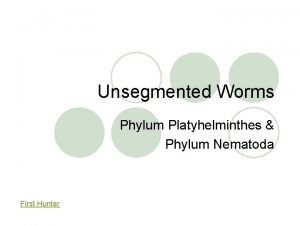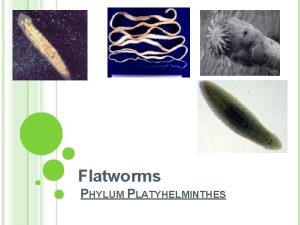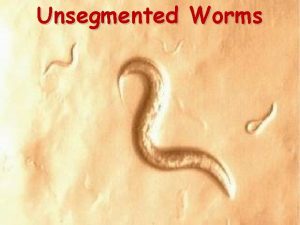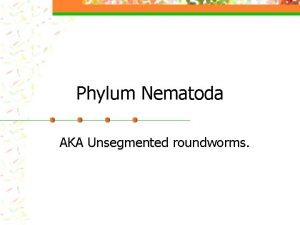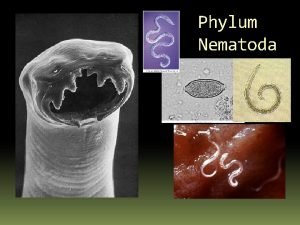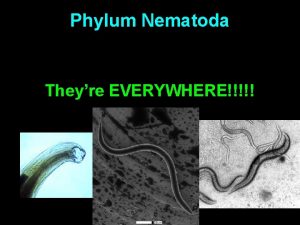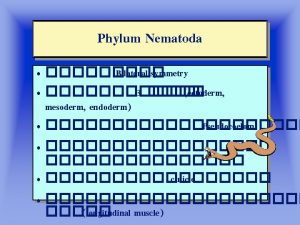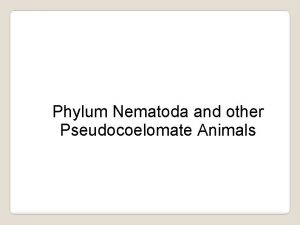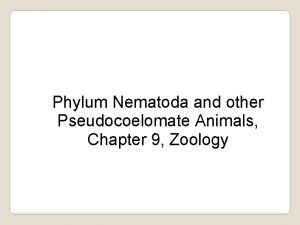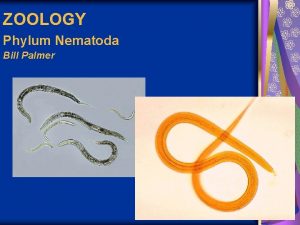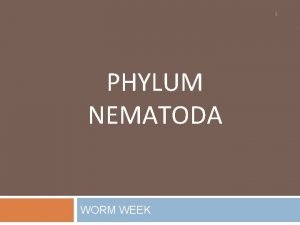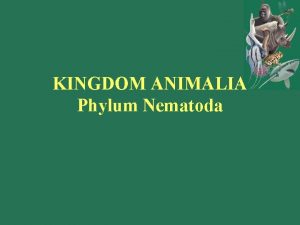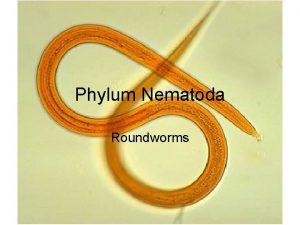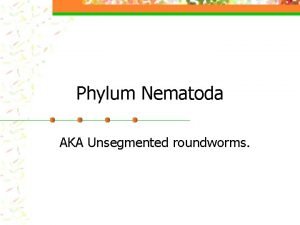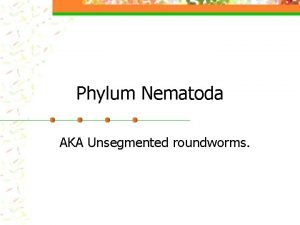Phylum Nematoda I General Information 1 Round unsegmented










- Slides: 10

Phylum Nematoda

I. General Information: 1. Round, unsegmented bodies tapered at each end 2. Pseudocoelom- body cavity filled w/fluid that distributes oxygen & nutrients so don’t have circulatory system 3. Tube-within-a-tube body plan 4. 2 body openings- mouth & anus 5. Size- microscopic to about 1 meter 6. Bilateral symmetry 7. Triploblastic – 3 tissue layers 8. Most are free living some are parasitic

II. Body a. Cuticle • Thin, tough outer skin may have spines or scales for protection. • Not easily digested by host • Most molt about 4 x during life b. Longitudinal muscle • Produces thrashing motion • Creates S- or C-shaped curves

III. Digestion/Feeding a. Parasitic, free living, saprobes (decomposers) b. Mouth- buccal cavity • May have hooks or suckers for attaching (parasite) • Sensory organs (“lips”) may be present c. Pharynx- muscular organ that rhythmically pumps food thru digestive tract d. Intestine- long tubular organ where digestion/absorption occur e. Rectum/Anus- end of digestive tract where wastes are excreted.

IV. Nervous System a. Dorsal & Ventral Nerve Cord- run along upper & lower surface of body sending nerve impulses to anterior end. b. Nerve ring- simple brain picks up stimuli from nerve cords. c. amphids – anterior (towards the head) depressions used for sensing chemicals in the water d. phasmids – posterior (towards the tail) depressions used for sensing chemicals in the water

V. Respiration a. All roundworms breathe by diffusion of oxygen into moist skin and carbon dioxide out of moist skin.

VI. Excretory System a. Excretory ducts collect liquid waste b. Excretory pores excrete collected liquid waste thru skin

VII. Reproductive system a. Dioecious b. Males are usually smaller than females c. Most lay eggs that hatch into larvaoviparous d. Some give birth to live larva- viviparous e. Some create eggs which they retain & hatch inside body- ovoviviparous f. Some males may have bursa- flap of skin used to hold female while transfering sperm • May also have copulatory spikes or spicules which are penis-like


VIII. Economic/Environmental Importance a. Free-living soil nematodes & saprobes- important as recyclers of necessary nutrients to soil. • 1 m 2 of mud = 4 million nematodes! b. Parasitic nematodes- Cause disease • Plants • Vertebrates • Humans
